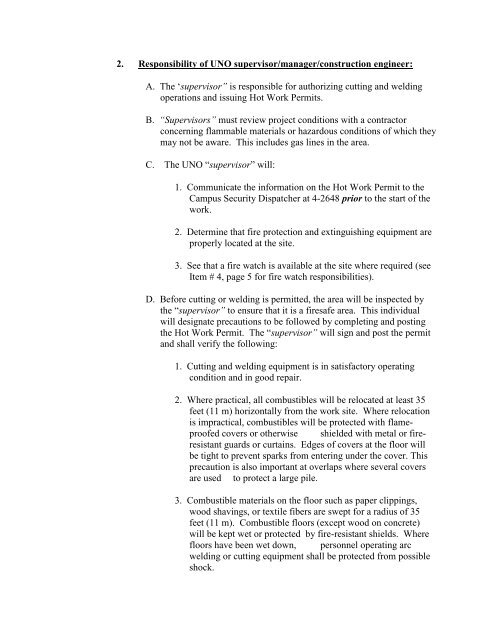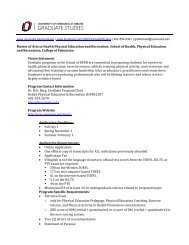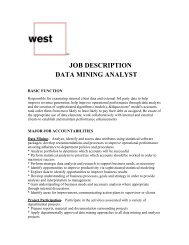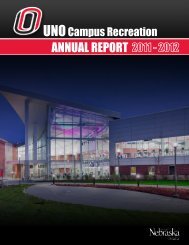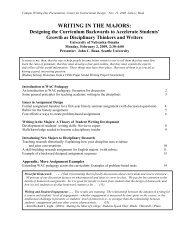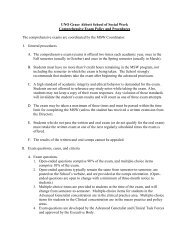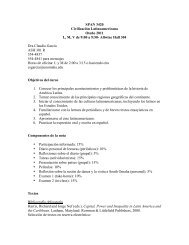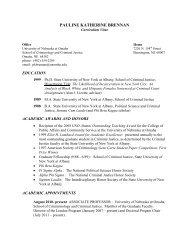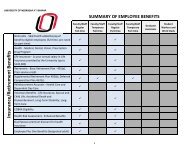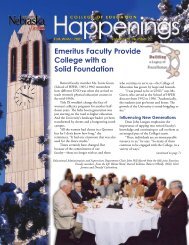Hotwork Permits - University of Nebraska Omaha
Hotwork Permits - University of Nebraska Omaha
Hotwork Permits - University of Nebraska Omaha
You also want an ePaper? Increase the reach of your titles
YUMPU automatically turns print PDFs into web optimized ePapers that Google loves.
2. Responsibility <strong>of</strong> UNO supervisor/manager/construction engineer:<br />
A. The „supervisor” is responsible for authorizing cutting and welding<br />
operations and issuing Hot Work <strong>Permits</strong>.<br />
B. “Supervisors” must review project conditions with a contractor<br />
concerning flammable materials or hazardous conditions <strong>of</strong> which they<br />
may not be aware. This includes gas lines in the area.<br />
C. The UNO “supervisor” will:<br />
1. Communicate the information on the Hot Work Permit to the<br />
Campus Security Dispatcher at 4-2648 prior to the start <strong>of</strong> the<br />
work.<br />
2. Determine that fire protection and extinguishing equipment are<br />
properly located at the site.<br />
3. See that a fire watch is available at the site where required (see<br />
Item # 4, page 5 for fire watch responsibilities).<br />
D. Before cutting or welding is permitted, the area will be inspected by<br />
the “supervisor” to ensure that it is a firesafe area. This individual<br />
will designate precautions to be followed by completing and posting<br />
the Hot Work Permit. The “supervisor” will sign and post the permit<br />
and shall verify the following:<br />
1. Cutting and welding equipment is in satisfactory operating<br />
condition and in good repair.<br />
2. Where practical, all combustibles will be relocated at least 35<br />
feet (11 m) horizontally from the work site. Where relocation<br />
is impractical, combustibles will be protected with flamepro<strong>of</strong>ed<br />
covers or otherwise shielded with metal or fireresistant<br />
guards or curtains. Edges <strong>of</strong> covers at the floor will<br />
be tight to prevent sparks from entering under the cover. This<br />
precaution is also important at overlaps where several covers<br />
are used to protect a large pile.<br />
3. Combustible materials on the floor such as paper clippings,<br />
wood shavings, or textile fibers are swept for a radius <strong>of</strong> 35<br />
feet (11 m). Combustible floors (except wood on concrete)<br />
will be kept wet or protected by fire-resistant shields. Where<br />
floors have been wet down, personnel operating arc<br />
welding or cutting equipment shall be protected from possible<br />
shock.


